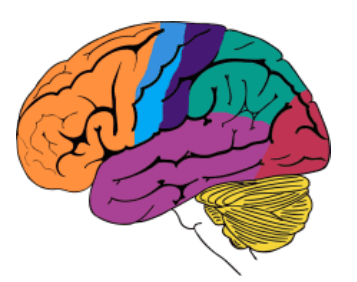The Brain Science

The brain is an incredible organ that helps us talk, think, see, smell, play, feel, taste, create, and so much more. However when we are overwhelmed by emotions it’s as if we stop being able to think or remember what to do. We act without thinking first.
Three main parts of the brain play a specific and important role. The brainstem, the prefrontal cortex, and the limbic system each contribute to how our child responds to sensory input.
- The brainstem is fully developed at birth. It is responsible for regulating breathing, digestion, sleeping, and many other unconscious bodily functions. Every parent is well aware of how being tired, hungry, thirsty or sick can be a catalyst for emotional outbursts.
- The prefrontal cortex is where logic, language, reasoning, self-control and emotional regulation occur. It helps us make smart and rational decisions and think before we act during emotionally challenging situations. The prefrontal cortex takes decades to fully mature. When we remember that this is not fully developed in our children, it can help us have a little more compassion and patience with them.
- The limbic system is the emotional center of the brain. This area develops rapidly in the early years and governs your young child’s behavior. Our limbic system is responsible for protecting us from harm, whether real or perceived. This system produces our survival response, fight, flight, or freeze. It is composed of the hippocampus, amygdala, and hypothalamus.
- The hippocampus is our memory saver. It is where new memories are saved and old ones are accessed. The hippocampus helps us learn.
- The amygdala is the part of the brain where we feel emotions. We can think about the amygdala like a guard dog focused on our safety. When the amygdala is in control your body might feel hot or tight and you might feel upset or uncomfortable. However, if you were to be crossing the street and you notice a car start driving towards you quickly you run as fast as you can to get to the other side.
- The hypothalamus is the center of the limbic system and regulates stress and immune responses so that our body functions are regulated.
The 4 F’s
There are many ways we respond emotionally to stimuli and sometimes this is called a stress response, we will call them emotional responses, and they are the 4 F’s. When a child perceives a threat, reasoning and language are inaccessible. The part of the brain most active during this time is wired for survival and protection. When the brain is in this mode, it switches us into fight, flight, freeze or fawn. This mode is how all brains protect themselves from danger, potential harm, or threats (real or perceived). This is when we see such behaviors as hitting, kicking, running, screaming, crying, yelling and other challenging behaviors described during meltdowns. It is your body gearing up for battle because the brain feels or perceives we are in danger.
Imagine This Scenario: You are turning onto your street after being in the car for a half hour with your child fussing in the back seat because they are hungry. All of a sudden, another car blows the stop sign and almost hits you. You slam on your breaks. How are you feeling? What did you do? What did you say?
- The fight response is typically associated with feelings of irritability, anger, or aggression; we stand our ground and fight. Fight can mean physically fighting someone but it can also mean yelling, using mean words, blaming others or stomping your feet.
- A fight response in the above scenario would look like feeling extremely angry that someone almost hit you, using some choice words to express your frustration, and/or feeling as though you want to drive after the car to give that person a piece of your mind.
- The flight response is typically associated with feelings of anxiety and fear, panic. Flight might mean we run away or try to escape but it could be as simple as leaving the room or area.
- A flight response in the above scenario would look like becoming instantly riddled with fear, wanting to get home as quickly as possible to get you and your child out of the car.
- The freeze response is associated with feeling stuck, spacing out, shame, depression, but also anger and numbness (you see also disassociation, everyone experiences this differently, and it is a feeling of disconnect between yourself and the world around you). Freeze is when we “shut down,” it might mean your body is frozen and you can’t move or your brain has stopped understanding what's going on.
- A freeze response in the above scenario would be to slam on your breaks, lose your breath, and not be able to move for a few moments.
- Lastly, the fawn response, a newer addition to the emotional responses, is typically associated with avoiding conflict, people-pleasing, difficulty saying ‘no’ and setting boundaries.
- A fawn response to the above scenario would look like blaming yourself for not being more aware of your surroundings and apologizing to your child for what had happened.
A majority of the time when we experience stressful situations such as these we don’t just experience one of these responses, but have multiple responses simultaneously or sequentially. We then have to help our bodies calm down using strategies that we have learned throughout our lifetime. Then we need to ensure our child feels calm and safe as well.
Resources:
Zensational Kids